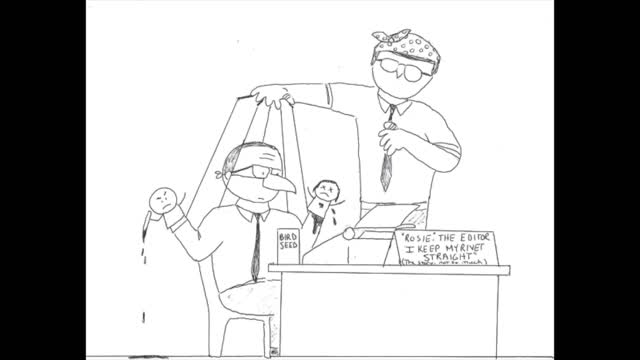Premium Only Content

The New York Times' Effect on Man
For years psychology students have read in their textbooks about the story of Kitty Genovese, a bar manager who was murdered on March 13, 1964 in Kew Gardens, New York, and how none of the “multitude” of witnesses did anything to stop it, call the police or offer any assistance. On March 27, 1964, Martin Gansburg of the New York Times wrote about the murder in an article titled “37 Who Saw Murder Didn’t Call the Police” (the first line of the article actually cites 38 witnesses). In the ensuing years, psychologists wrote about the murder employing such terms such as “diffusion of responsibility,” “bystander effect,” or “bystander apathy.”
While there is no dispute of the horrible crime itself, the New York Times article, the primary source of this lesson in “bystander apathy,” was discovered to be filled with unfounded facts and gross exaggerations. There were only two attacks, not three. Two people in fact called the police. A 70-year-old woman ventured outside and held Ms. Genovese in her arms until the ambulance arrived. And of the “38 witnesses,” only two (2) of them (one for each of the two attacks) had seen and heard enough of the encounter between Ms. Genovese and her assailant to come to the conclusion that she was being murdered. Yet the author, Martin Gansburg, and his overbearing editor, Abe Rosenthal, insisted on pushing it into publication. Shortly after the story broke in 1964, police reporter Danny Meehan reviewed the article and discovered a lot of inconsistencies. When Meehan asked Gansburg why his article failed to reveal that the numerous “witnesses” did not feel that a murder was happening, Gansburg replied, "[Because] It would have ruined the story." Rosenthal later wrote a book on the subject. While Mr. Gansberg regretted being pressured into writing the story, Mr. Rosenthal never admitted to the factual errors and exaggerations.
What’s just as disappointing as the lack of journalistic integrity was the behavior of textbooks, particularly undergraduate textbooks. Psychology textbooks, for instance, very early on encourage students to use critical thinking, yet the authors of these books failed to demonstrate critical thinking themselves by incorporating this error-prone story into their texts. This unfortunately is all too common. According to the article “The Kitty Genovese Murder and the Social Psychology of Helping: The Parable of the 38 Witnesses,” (Manning, Levine and Collins, 2007), misrepresentations in textbooks is not new. Textbook writers in general try to provide eye-catching, simplified material in order to engage undergraduate readers, even if it means doing so at the expense of accuracy.
The title of this sketch was taken from a line from The Bee Gees “Stayin’ Alive.”
-
 1:02:01
1:02:01
Sean Unpaved
3 hours agoTragedy Strikes: Kneeland's Remembrance, Spo's Inferno, CFB HC Rumors, & TNF Raiders-Broncos' Odds
19.6K -
 1:01:46
1:01:46
Timcast
3 hours agoBannon RIPS GOP For Dismissing Zohran, "This Is Very Serious"
106K80 -
 2:12:18
2:12:18
Side Scrollers Podcast
5 hours agoSide Scrollers VTuber TAKE OVER with Kirsche, Rev Says Desu & DarlingStrawb | Side Scrollers
36.8K3 -
 LIVE
LIVE
StoneMountain64
2 hours agoArc Raiders is actually INCREDIBLE
117 watching -
 2:03:04
2:03:04
MattMorseTV
4 hours ago $0.74 earned🔴Trump’s EMERGENCY Oval Office ANNOUNCEMENT.🔴
58.3K64 -
 LIVE
LIVE
GrimmHollywood
5 hours ago🔴LIVE • GRIMM HOLLYWOOD and BIG TALL REDNECK • 3K 3XL TAKEDOWN • PGA • BF6 REDSEC • ARC RAIDERS
63 watching -
 3:11:27
3:11:27
Right Side Broadcasting Network
18 hours agoLIVE REPLAY: President Trump Makes an Announcement - 11/6/25
144K59 -
 1:04:07
1:04:07
The Rubin Report
4 hours agoZohran Mamdani Humiliates Himself by Breaking His First Promise Only 24 Hours After His Win
83.9K149 -
 1:04
1:04
Steven Crowder
4 hours agoTEASER: Deport All Illegals | Change My Mind
146K525 -
 4:37:26
4:37:26
Barry Cunningham
17 hours agoBREAKING NEWS: PRESIDENT TRUMP MAKES AN ANNOUNCEMENT!
35.2K26